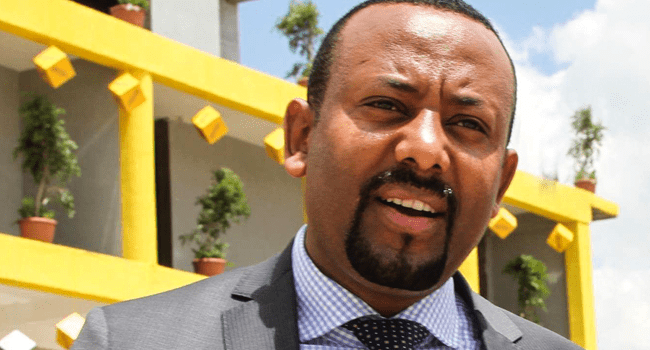Centrica shuts down UK data centres in move to the cloud with Microsoft

The plan includes moving employee documents and data to OneDrive and Sharepoint, migrating all mailboxes and running Dynamics CRM on a hybrid model for the next few years.
The UK and Ireland arm of energy giant Centrica has nearly finished migrating its enterprise systems and data from an on-premise data centre to Microsoft Azure, shifting to Office 365 and Dynamics 365 in the process.
The move to cloud services was announced by Microsoft back in June 2017 and the migration has been going at high speed since, with the company predicting completion by the end of the year, or Q1 2018 at the latest. This includes moving employee documents and data to OneDrive and Sharepoint, migrating all mailboxes and running Dynamics CRM on a hybrid model for the next few years.
Speaking to Computerworld UK at Microsoft’s Future Decoded event in London this week, Centrica’s UK and Ireland CIO Ash Jokhoo said: “We realised that we have lots of on-premise activity in terms of files for our employees and so that was the real first movement, how to improve the collaboration between our employee base and move files to an ecosystem that makes sense for our organisation.”
Centrica, which is the parent company of British Gas and Bord Gis in Ireland, has been a Microsoft shop for some time, using Office and Dynamics CRM on premise, so it “just made sense to move forward with an integrated suite” when it came to moving back office systems to the cloud, according to Jokhoo.
Under global CIO Mike Young, Centrica is embarking upon a “Digital Workplace initiative” which means it will equip “our global workforce with Office 365 and modernise field services within DynoRod by using Dynamics 365”, he said at the time of of the partnership announcement.
In terms of migration Centrica plans on moving 90 percent of its enterprise data into the cloud, according to Jokhoo. However, “customer data is a completely different proposition”, he said, with that sitting in an SAP ecosystem. The CIO hopes “to move forward together with both technologies in a way that serves our customers”.
The speed of migration has been rapid since the announcement in June. “I think we are running at two speeds in terms of migration: fast and faster,” Jokhoo said. “We’ve done 20 million files across our organisation and 20-22 million mailboxes already.”
The company has also moved quickly in terms of adopting Skype for Business across the organisation, racking up 20,000 hours of video calls in the last year.
Centrica’s infrastructure and operations team are also running adoption sessions alongside their migration efforts to help employees adapt to working in a more cloud-based, collaborative way.
“We have a culture that is evolving to meet the needs of our changing customers, which means we have to have agility and the way we go to market has to speed up,” Jokhoo said.
While added collaboration is always the stated goal for organisations making a shift like this, there are of course cost savings. “I think there is always an upside in terms of savings when moving from on-premise to the cloud,” Jokhoo said. “But there is a vast amount of investment and cost-to-achieve that needs to go through first. Although savings and cost profile does absolutely play into the strategy, the collaboration element is far more important.”
So Centrica has been able to shut down some data centres and legacy systems but Jokhoo insists they have to change “the mindset also. If we are going to attract the best people to join our organisation to transform and disrupt the industry we need the best tools and the Microsoft suite is absolutely a part of that.”
Jokhoo admits that none of this work will have the sort of direct impact on customers as some of the data mining being done within British Gas, or the IoT innovation of Connected Home, as both are giving customers better insight into their energy use, but there are non-direct impacts this work can have on customers.
“We are in an extremely competitive environment and if we can get the cost-to-serve where it needs to be, we can pass those savings on in terms of prices for services and energy. That’s really the key here and the long term play as we go through this transformation.”
Additionally, Jokhoo foresees Centrica’s ability to serve customers improving as employees have access to more dynamic tools. “Clearly there will be a more agile customer service organisation on Office 365 and a more agile field force organisation on the Dynamics platform, so service will be better,” he said.
What next?
Centrica is already eyeing some of the advanced capability a shift to Azure could bring the business.
Jokhoo mentioned how “intelligent edge and being able to compute at the edge is going to be a fascinating journey for everyone in this industry. I see that as a beacon and will be really interested to see how that evolves and how we may be able to integrate that [into Connected Home].”
Then there is the possibility of building out augmented and mixed reality capability that could reduce the workload of its 12,500 engineers. “This is not something we are actively building out,” Jokhoo said, “but we do have an R&D department and helping customers over digital channels to show them how to reset a boiler or pressurise their radiator system or even, within the realms of safety, to help them through the process of connecting up their devices.”
“The help and support is really where it will come into play.” Read more
Source computerworld.in


